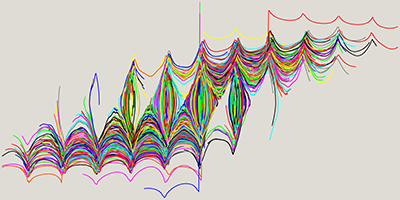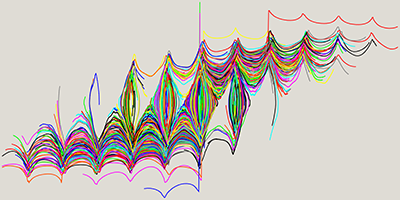A Crystalline Undulator
Undulators are periodic arrangements of magnets that are used as insertion devices at synchrotron light sources. Through their alternating magnetic field, they cause the relativistic electron beam in the synchrotron ring to wiggle and thereby emit a beam of coherent radiation. Existing undulators can produce light with wavelengths as short as a tenth of an angstrom (the “hard” x-ray regime). But reaching even shorter wavelengths, which could penetrate deeper into materials and probe their structure with greater resolution, is problematic: emission wavelengths are proportional to the period of the undulator magnets, and scaling it down poses a technological challenge. Now, as reported in Physical Review Letters, researchers have realized a “crystalline undulator,” in which the field periodicity is not provided by magnets but by the extremely strong internal electromagnetic field from the atoms of the crystal.
The team, led by Ulrik Uggerhøj at Aarhus University in Denmark realized a scheme theorized by Andriy Kostyuk in 2013. The authors directed a beam of relativistic electrons onto a silicon-germanium crystal with periodically bent crystallographic planes. Inside the crystal, the electrons followed a sinusoidal path determined by the shape of the bent planes, thereby emitting radiation. As in an undulator, the emitted radiation was enhanced at specific resonant wavelengths determined by the crystalline periodicity. The largest enhancement was observed at a few megaelectronvolts—a gamma-ray wavelength inaccessible by current undulator technologies. So far, the device’s emission is broad, lacking the coherence of conventional undulators, but the design of optimized crystals could lead to more sharply defined frequencies. Crystal undulators could serve as compact light sources operating in previously inaccessible hard x-ray and gamma-ray regimes. – Matteo Rini





